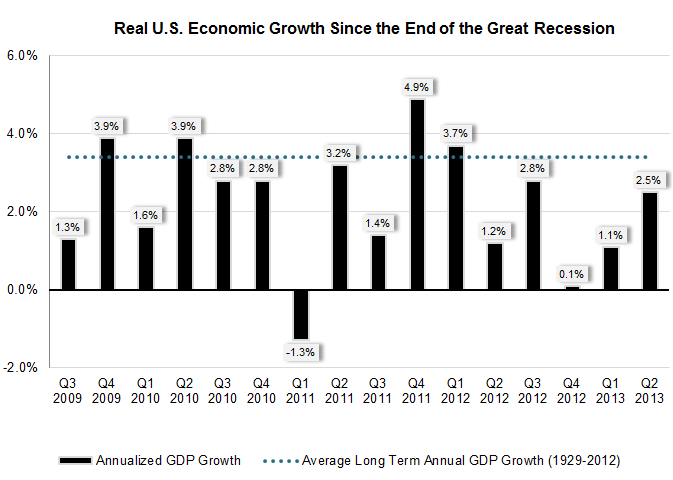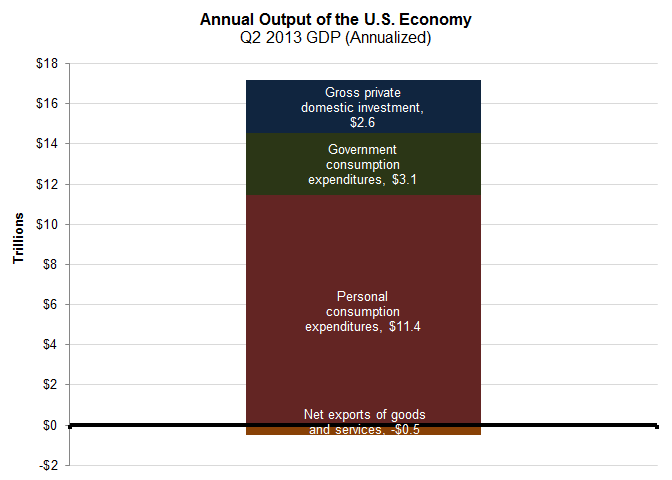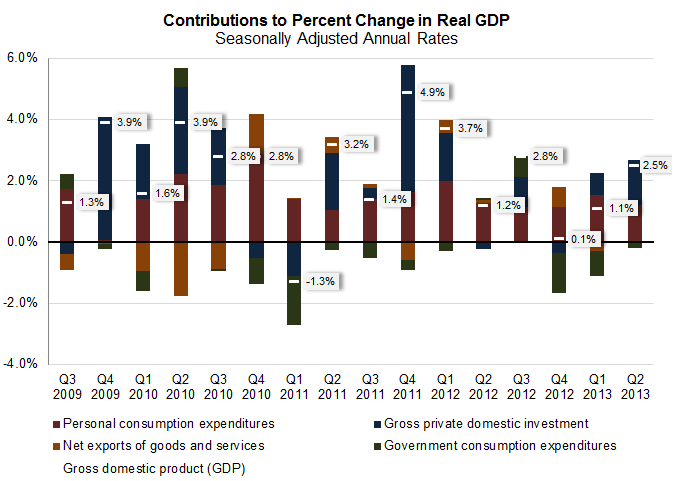Today the U.S. Bureau of Economic Analysis reported that the U.S. economy grew at an annualized rate of 2.5% during the second quarter of this year. Though this was faster than the economy expanded during the previous two quarters, it was still slower than the average yearly pace experienced by the U.S. economy since 1929; 3.4%.
During the four years since recession ended (16 quarters) only four quarters have provided growth greater to or equal that of the average growth experienced since 1929.
The annual output by the U.S. economy is derived from four broad categories:
- Gross private domestic investment: business related fixed investment in structures, equipment and intellectual property as well as residential structures
- Government consumption and expenditures: federal (defense and non defense), state and local
- Personal consumption expenditures: goods (durable and non-durable) and services (household and nonprofit consumption)
- Net exports of goods and services: Exports minus imports
The post recessionary years have seen steady (but not impressive) contributions from personal consumption, mostly diminishing contributions from private domestic investment and unsteady contributions and subtractions from government and net exports.
Data Source: U.S. Bureau of Economic Analysis


